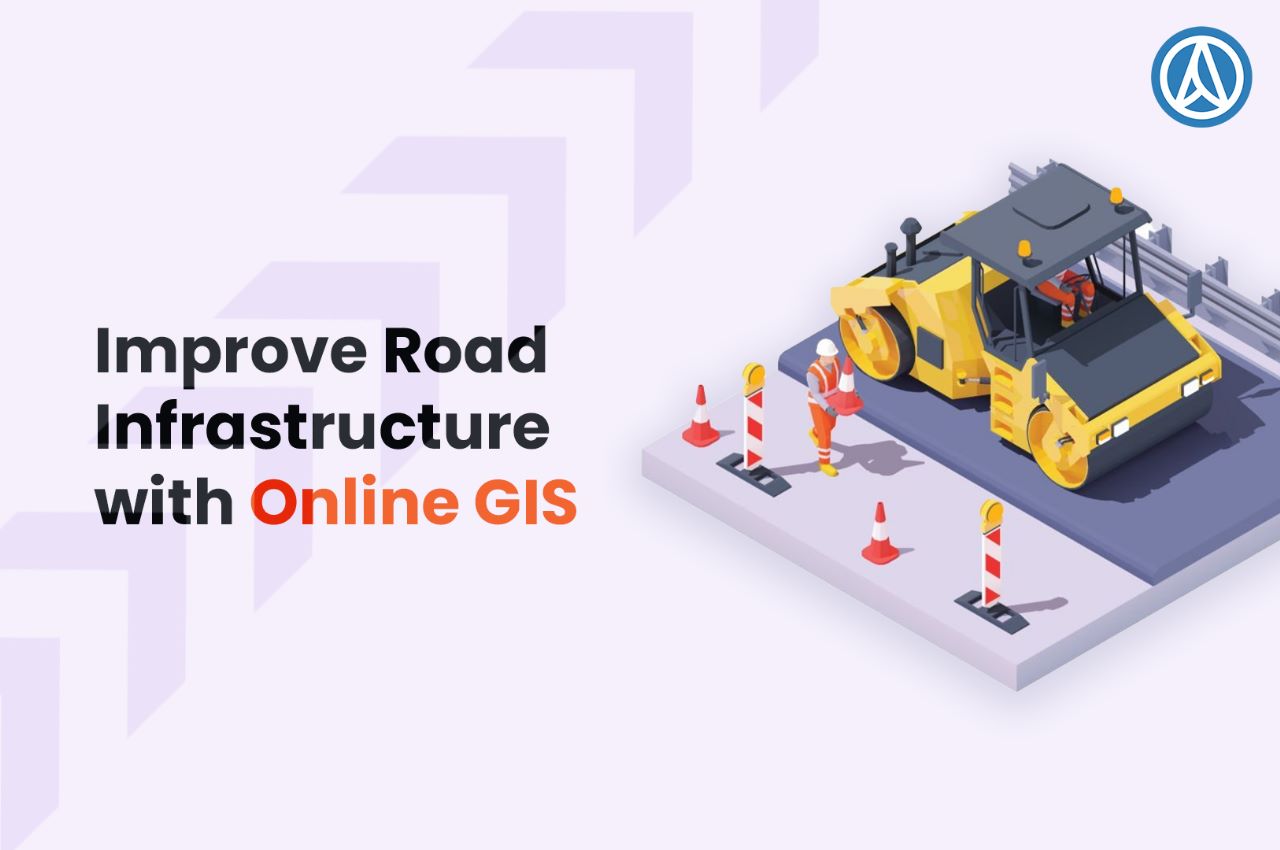How To Use GIS For Road Infrastructure Planning
Road infrastructure plays a vital role in supporting economic growth and improving the quality of life for citizens. GIS technology is advantageous in planning and managing the development of roads. In this blog, we discuss applications of GIS for road infrastructure.
In a developing country like India, urban planning and overall development greatly includes road improvement. But road networks are outdated, poorly maintained, and unable to meet the demands of the growing population.
To address these issues, governments and local authorities are turning to new technologies such as online Geographic Information Systems (GIS). Let’s see how we can use GIS for road infrastructure and development.
What is GIS Technology?
GIS technology provides for the storage, management, analysis, and visualization of geographical data. Unlike traditional or manual methods, GIS allows users to create digital maps and perform spatial analysis of data to gain insights.
GIS technology has applications in various fields such as transportation, urban planning, public safety, and natural resource management. But that is not all. GIS has various applications across industries like agriculture, aerospace and aviation industry, logistics, and more.
Benefits of Using GIS for Road Infrastructure
There are many uses of GIS in road construction and planning. From the market research phase to keeping track of road upgrades. Let’s see the benefits of GIS in road infrastructure-
-
Better Planning And Design
GIS creates detailed digital maps of road networks. The data collected by GIS tools provide information on traffic, road usage, road degradation, accident statistics and more.
Using GIS tools, we can perform spatial analysis on this data to get details about high-risk areas, areas that need improvement, and areas where roads can be optimized. This is very useful for architects and strategists to make informed decisions.
-
Increased Efficiency And Cost Savings
GIS data is very useful in finding information and conducting research. We can ensure optimal usage of resources with proper data. Thus, government and local authorities can reduce the time and cost associated with traditional surveying and data collection methods.
-
Improved Safety
GIS technology analyzes road accident data and identifies areas where road infrastructure improvements are needed to increase safety. Additionally, it can also be used to monitor road conditions in real-time, which can help identify and repair hazards before they lead to accidents quickly.
-
Better Public Engagement
By providing the public with online access to information about road infrastructure, GIS can help increase public engagement and participation in the planning and management of road networks.
-
Store Data Precisely
You are presented with many reports during road work or maintenance activities, which can be quite daunting. Online GIS allows you to store many data and personalize them to meet your specific needs.
This data can be linked to specific geo-locations or positions to make it easier for you and your team to grasp using an interactive map. GIS tools can truly help you execute field operations and improve your tactics.
-
Real-Time Monitoring of Roadwork
Managing a team in the office can be difficult. You must work at the office while worrying about the site and the project. What if there was a problem? How would you know where the problem is and what the situation is like on the ground?
Using GIS technology, you can easily mark the issue on a map. The map editor allows you to update, analyze, and share data with your group. They generally know what to expect when they arrive on-site.
Conclusion
GIS is a powerful technology useful in improving the efficiency, safety, and sustainability of road infrastructure. The government and local authorities can use GIS to plan, design, and manage road networks. It leads to better decisions, reduced costs, and improved quality of life for the residents.
An efficient, cost-effective road infrastructure plan can be developed and implemented with the right data backing and GIS tools.


Pingback: How To Use GIS in Architecture For Better Infrastructure Planning?